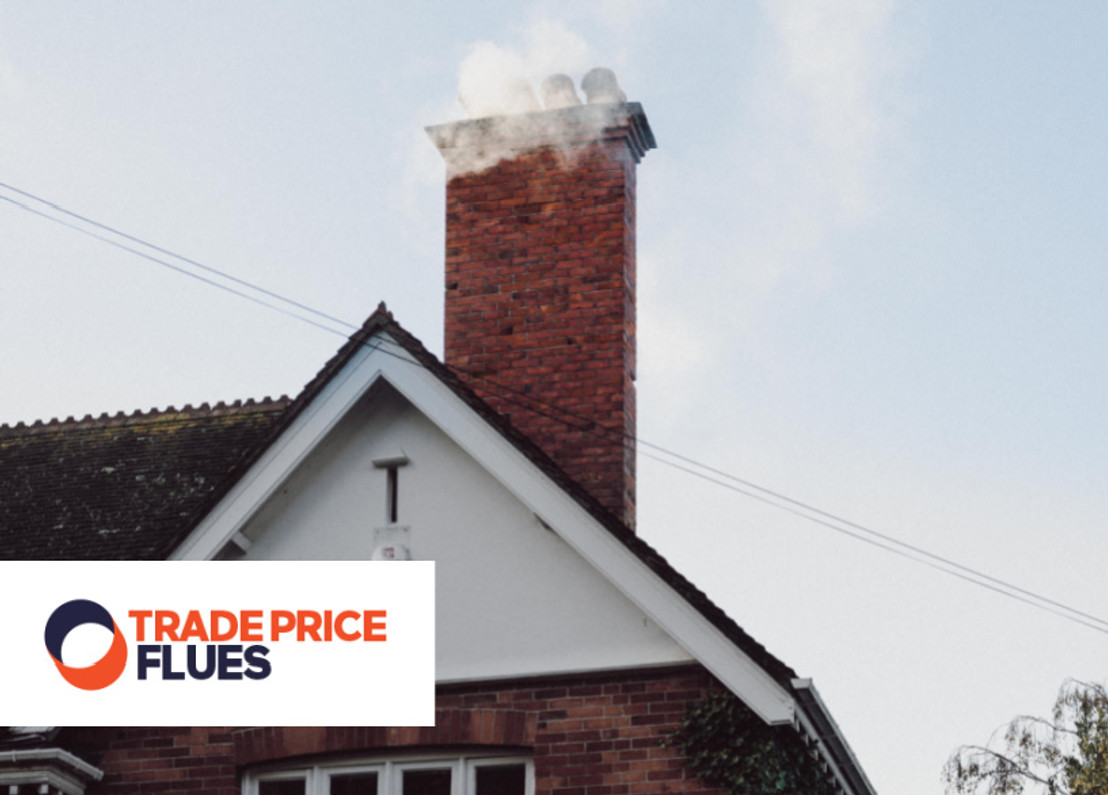Why You Should Insulate Your Chimney Flue
If you really want to get the best out of your open fireplace or wood burning stove, then it’s highly recommended that you insulate your chimney flue. Why? Because it brings a whole host of benefits including improved performance, better efficiency and more. Keep reading and we’ll tell you everything you need to know about insulating your chimney flue.
What is a chimney flue?
Okay, so before we delve into all of the ins and outs of insulating chimney flues, we thought we’d begin with a few definitions.
In the world of fireplaces and chimneys, many terms are used interchangeably, which easily leads to confusion.
So, what exactly do we mean by the phrase chimney flue?
Put simply, the chimney flue refers to the inside of the chimney - the hollow shaft that leads up from the fireplace/stove to the top of the chimney. The chimney flue is the route smoke travels up to get out of your home:
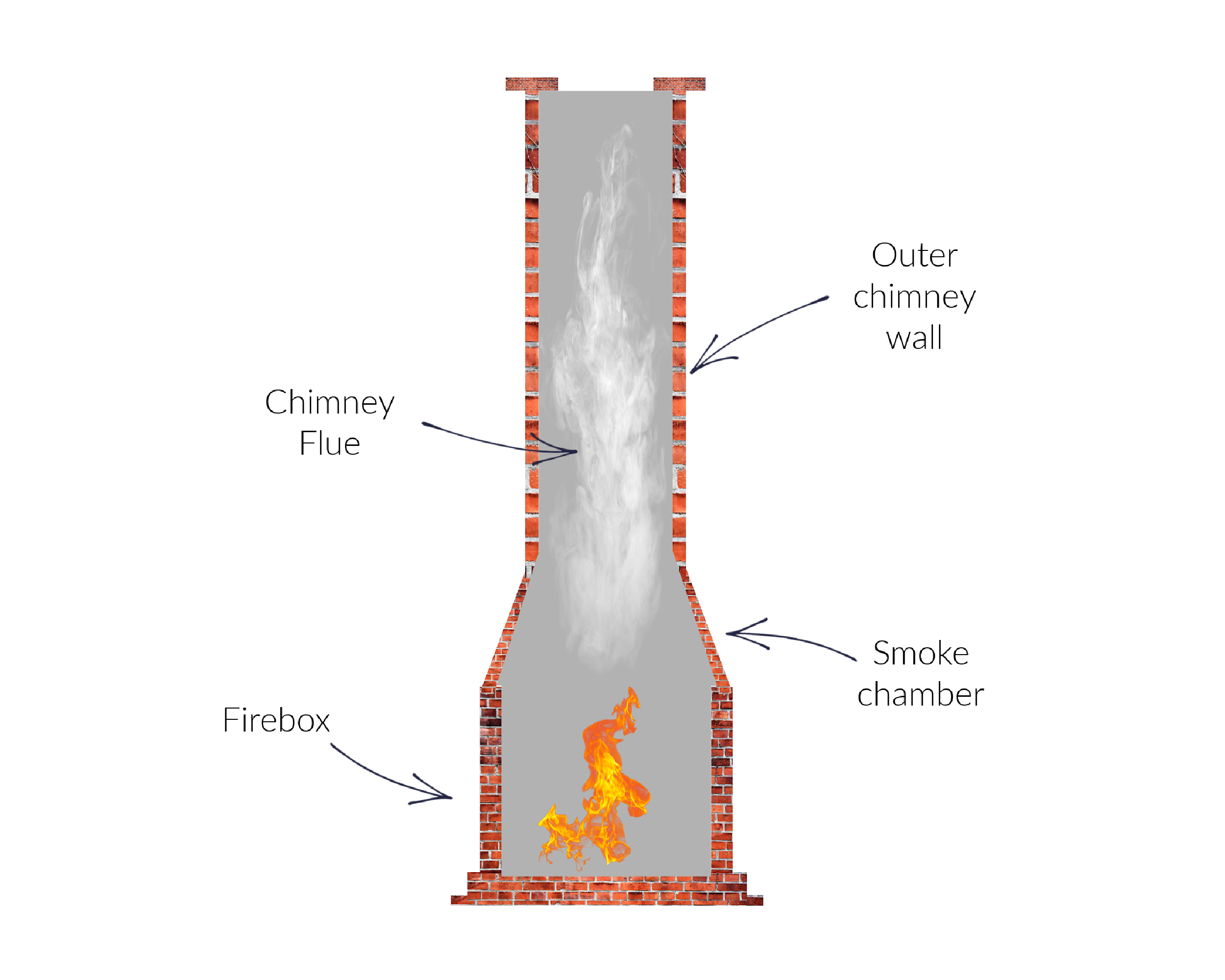
Depending on the age of your home, your chimney flue may be constructed in one of several different ways. In particularly old homes (pre-1960s) many chimney flues are simply made from the same bricks as the rest of the walls in your home.
Newer chimney flues are lined with clay or similar materials. This is to help insulate the chimney and better help the smoke from the fire/stove escape.
What is a chimney flue liner?
Now that we’ve got a clear understanding as to what a chimney flue is, what is a chimney flue liner? As we mentioned earlier, these two phrases tend to be used interchangeably - however, they refer to different things.
The clue to differentiating between them is in the name.
As we have seen, a chimney flue is the hollow cavity in the chimney. A chimney flue liner is effectively a sort of long ‘pipe’ that sits within the chimney flue as the illustration below demonstrates:
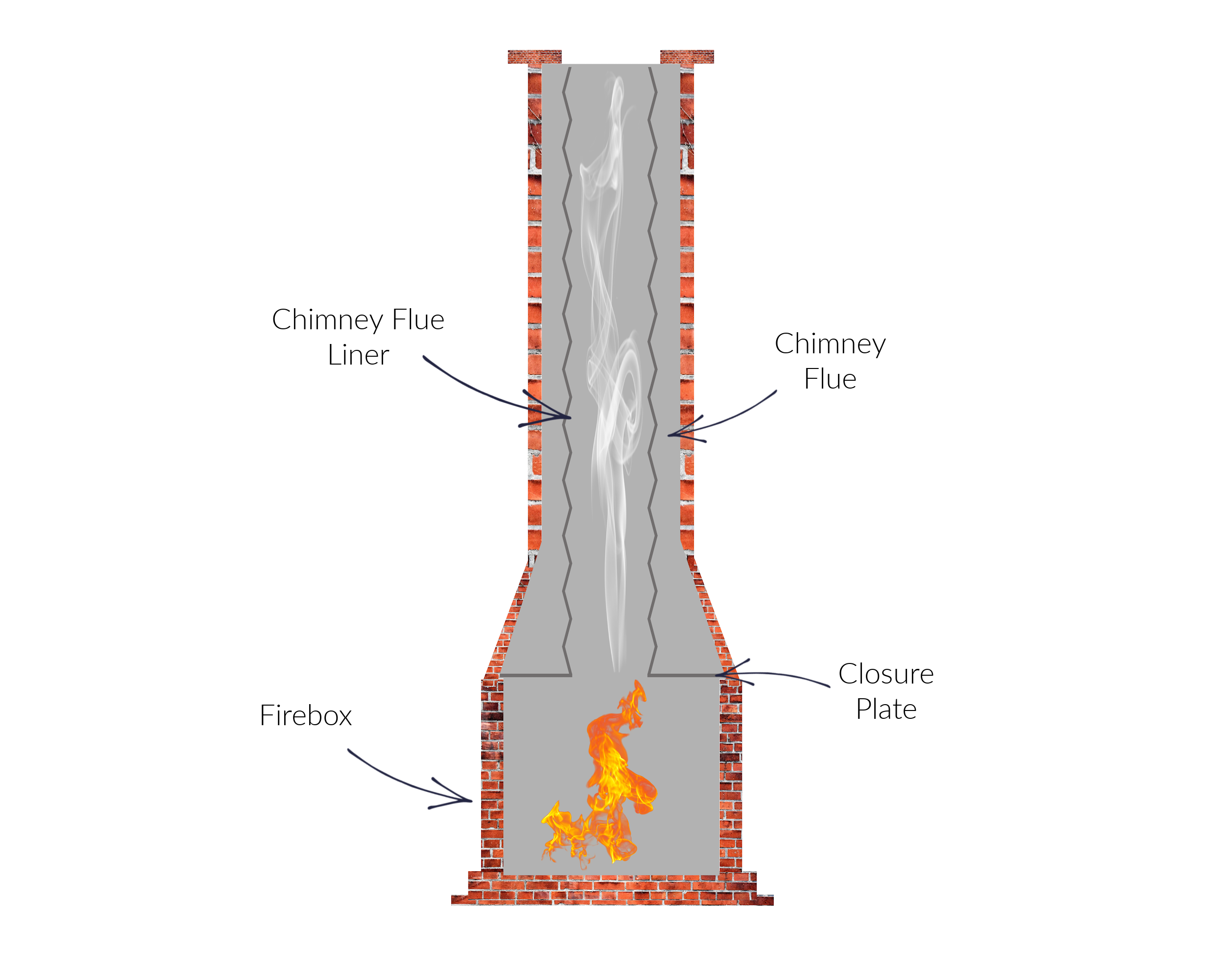
Chimney flue liners are usually connected to the chimney pot at the very top of the chimney as well as being connected to a closure plate just at the top of the firebox. The closure plate acts as a kind of ‘ceiling’ for your firebox, ensuring that all of the smoke from your fire is channeled up into the chimney flue liner.
What does a chimney flue liner do?
A chimney flue liner provides an insulated route for the smoke from your stove or fireplace to travel up.
This has a number of benefits:
> A chimney flue liner will help your fire perform better. This is because it keeps the smoke warm as it travels up the chimney, improving the draw of the fireplace.
> A chimney flue liner can help prevent downdrafts. As anyone who has lived in a house with an unlined chimney will tell you, drafts coming down the chimney when there isn’t a fire lit, can quickly make your home feel cold. Using a chimney flue liner will help prevent this.
> Chimney flue liners also improve the safety of your chimney. A flue liner will prevent the build up of creosote, soot and other combustible materials on the inside walls of your chimney flue. If you don’t use a chimney flue liner, then over time these deposits can build up in your chimney flue and potentially cause a fire.
As you can see, it’s certainly worthwhile using a chimney flue liner in your chimney. But, should you also have your chimney flue insulated?
Yes!
Why should you insulate your chimney flue?
Surely a chimney flue liner is enough to keep your chimney insulated? Whilst a chimney flue liner will help keep your chimney insulated, we would recommend going a step further.
As the illustration below shows, even with a flue liner in place, there is still an air gap within the chimney flue which allows cold air to seep in and affect the flow of smoke up the liner:
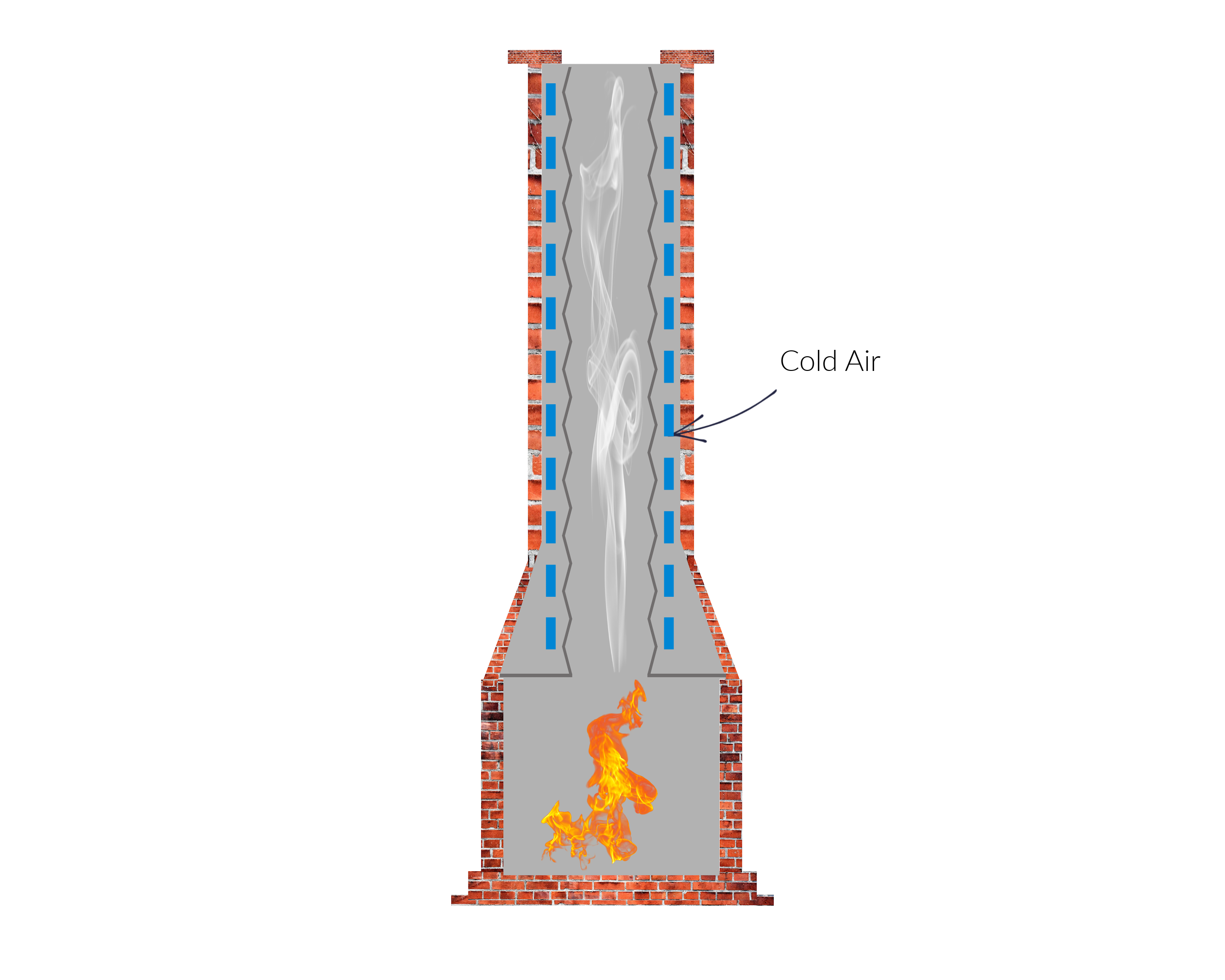
By taking steps to fill this space with insulation material, you can further improve the performance of your fireplace - making it safer, more efficient and better able to withstand the elements.
Insulating your chimney flue liner is particularly helpful in the following circumstances:
> You have a very large chimney with a large chimney flue.
> Your chimney sits on an exterior wall, protruding out from the main structural walls of your home - this means the chimney is very exposed to the elements so the air gap in your chimney flue is more likely to get very cold.
> Your chimney stack is too tall - if you have a very tall chimney, then the smoke from your fire may get too cold before it reaches the top. Without insulation the smoke will cool and fall back down into your fireplace and living room.
All of these circumstances can lead to your fireplace burning poorly or going out, your chimney having an insufficient draw, downdrafts, smoke collecting in your living room and much more.
Insulating your chimney flue (in addition to using a chimney flue liner), will go a long way towards improving the performance of your fireplace.
How does chimney insulation work?
Chimney insulation works on the principle of trapping warm air around your flue liner.
Whether you choose to use an insulation sleeve or vermiculite (more on these insulation options in a moment), the insulation keeps the air within your flue liner warm.
Because the air in your flue is warm, this makes it much easier for the smoke from your fire/stove to flow upwards. This maintains the ‘draw’ of your chimney - the negative pressure which pulls cool air into your fire and then the warm air and smoke from the fire up out of the chimney.
Without proper insulation in your chimney the smoke will condense on the walls of the liner and fall back down into your fireplace. With the draw disrupted your fire will gutter and possibly even extinguish.
Is it a requirement to insulate a chimney flue liner?
Okay, so now we know that it’s a good idea to insulate your chimney flue. But do you have to?
The short answer is no.
At the time of writing there are no Building Regulations which stipulate that you have to insulate a chimney flue liner.
With that being said, the Building Regulations do state that smoke and gases must be safely drawn away from your property. So technically, if your chimney is unable to achieve a proper draw because it isn’t sufficiently insulated, it could fail to meet the requirements of the Regulations.
Our recommendation is that you should always take the extra time and effort to insulate your chimney flue liner. As we’ve mentioned above, you’ll certainly reap the rewards in terms of a more effective, efficient fireplace.
How do you insulate a chimney flue?
Hopefully we’ve made the benefits of insulating your chimney flue clear. If you’ve decided you need to insulate your chimney, how exactly do you go about doing it?
There are two main ways to insulate your chimney flue:
> Wrap your chimney flue liner in an insulation sleeve.
> Pour vermiculite down your chimney flue in the space between the chimney flue liner and the walls of the chimney.
Let’s take a closer look at how each of these processes work.
Using an insulation sleeve
In order to properly insulate your chimney flue liner, you will need access to the complete length of the liner - as such, we recommend that you insulate your chimney flue liner before you install it.
When it comes to the insulation itself, it’s vital that you pick the right type.
Chimney flue liners can get very hot - they’re channeling hot air, smoke and combustibles away from a fire after all - so you can’t just use any material.
We recommend using ThermaFlue. It’s a textile sleeve which is made from a series of glass fibre mats which are coated in waterproof silicon. Each sleeve is fastened together by strips and buckles and a patented D-G linking rings system.
The image below shows you in greater detail what these ThermaFlue sleeves look like:

You simply wrap these around the chimney flue liner to in effect create a ‘blanket’ for your flue liner. The liner is then simply installed in the chimney flue in the usual way.
These ThermaFlue insulation sleeves have a number of unique benefits that you won’t find with types of flue liner insulation:
> It’s the only product of its kind to be physically tested with a flue liner by BSRIA (the Building Services Research and Information Association) according to BS EN1856-2:2009 and to be approved by HETAS.
> It has a rating of T600 N1/P1/P2 D/W Vm (L*****) G which means it is able to withstand high temperatures.
Once installed, the ThermaFlue liner will provide excellent, long-lasting insulation for your chimney flue.
Here at Trade Price Flues we have ThermaFlue insulation sleeves available for 5”-6” chimney flue liners and for 7”-8” chimney flue liners.
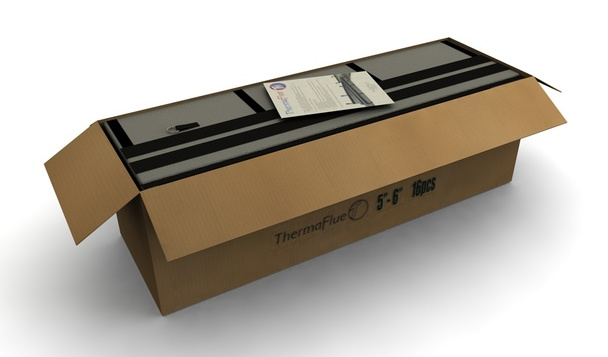
Shop Now - 5”-6” ThermaFlue Insulation Sleeve Box of 16
You can buy the ThermaFlue sleeves individually or in boxes of multiple sleeves. So, no matter the length or diameter of your chimney flue liner, there will be a ThermaFlue insulation sleeve for it.
Using vermiculite to insulate your chimney flue
Another, older, way of insulating your chimney flue is to use vermiculite.
Vermiculite is a naturally occurring, non-combustible mineral which acts as an excellent insulator of heat. When vermiculite begins to be heated it expands slightly, making it an ideal insulating material to fill the air gap between your chimney flue liner and the walls of a chimney.
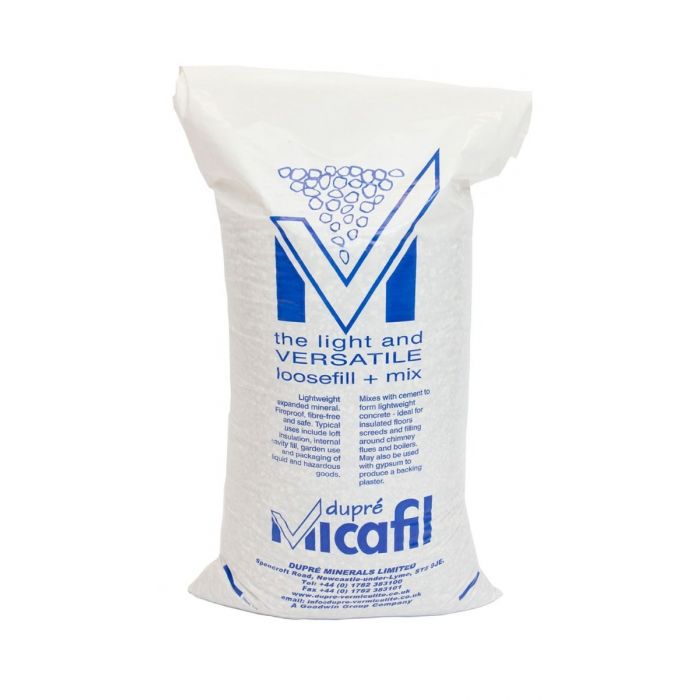
Shop Now - 100L Vermiculite Bag
Vermiculite offers a very straightforward way of insulating your chimney. Available in large 100 litre sacks, you simply pour the vermiculite down the air gap between your chimney flue liner and the walls of your chimney.
Simply keep pouring until the gap has been filled. Of course, it’s important you have a closure plate at the bottom of your chimney, otherwise the vermiculite will simply pour down into your fireplace!
If you live in a two storey or higher property, you will need to work at height with scaffolding etc. So, we would recommend you use a qualified chimney professional or builder to do this for you.
Note - one of the reasons that vermiculite is no longer used as much to insulate chimney flues is because removing it can be a time-consuming job.
Insulate your chimney with Trade Price Flues
We hope you’ve found our guide to insulating chimney flues helpful. Here at Trade Price Flues we stock everything you need to ensure your chimney is performing at its best, however if you require any further information or advice, please contact us.
Shop chimney insulation at Trade Price Flues today
Read more chimney and flue liner advice on the Trade Price Flues blog…
How Do You Fit a Chimney Liner? | Does My Chimney Need a Liner? | The Causes of Chimney Downdraft and How to Prevent It
Latest Articles
-
Air Pollution Down in the UK Despite Record Wood Burner Sales
Great news! Wood-burning stoves, once considered environmental villains, have transformed into eco-f …18th Apr 2024 -
A Guide to Stove Installation in Lodges, Sheds, and Shepherd’s Huts
Shepherd’s huts, lodges, and sheds have become increasingly popular as charming retreats or alternat …25th Mar 2024 -
Pinned vs. Pinless Moisture Meters: Which is Best for Firewood?
When you collect or buy firewood, it usually starts very moist inside. Using sopping wet wood to bur …4th Mar 2024




